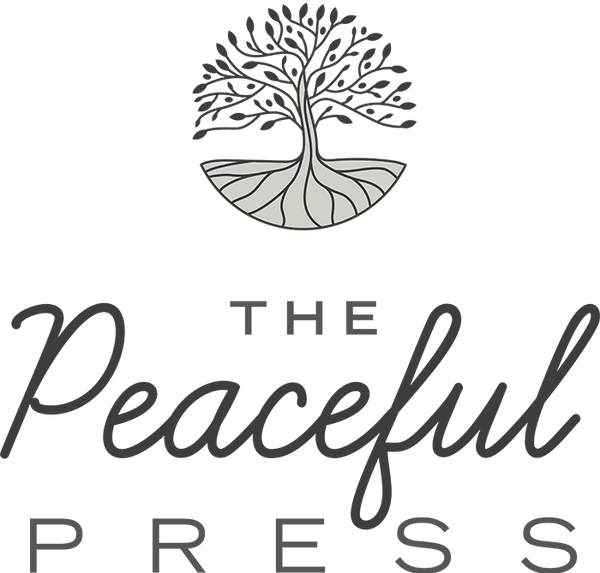What Is Notebooking? A Gentle Guide to Cultivating Curiosity and Connection Through Creative Learning
At The Peaceful Press, we believe that education is not just about filling in blanks or checking boxes—it's about nurturing wonder, fostering creativity, and building lifelong relationships with truth, goodness, and beauty. One of the most powerful tools we’ve found to support this kind of learning is notebooking.
But what exactly is notebooking? And how can it support your family’s journey toward joyful, connected, and meaningful education?
Let’s explore.

What Is Notebooking?
Notebooking is a method of documenting learning through written narration, illustration, and creative expression. Rather than relying solely on worksheets or tests, notebooking invites your child to respond to what they’re learning in a more personal, meaningful way.
Think of it as a handcrafted portfolio—a living book of your child’s thoughts, discoveries, and growing knowledge.
At The Peaceful Press, notebooking often accompanies our literature-based guides. Whether your child is illustrating a scene from Little House in the Big Woods recording new vocabulary from North American Indians, or writing about a hands-on nature walk, notebooking turns learning into a story worth telling.
Why Use Notebooking in Your Homeschool?
Notebooking aligns beautifully with a Charlotte Mason-inspired, whole-child approach to education. Here’s why so many families in our community love it:
-
It encourages deep engagement. Notebooking slows things down, allowing children to really think about what they’ve read or experienced.
-
It builds writing skills naturally. Children learn to communicate clearly and creatively by narrating ideas in their own words.
-
It nurtures creativity. With space to draw, collage, or diagram, children can make their notebooks a reflection of their personalities and passions.
-
It creates a lasting record of learning. Over time, notebooks become treasured keepsakes that showcase your child’s progress and unique voice.

What Does Notebooking Look Like?
Notebooking doesn’t have to be complicated. It can be as simple or elaborate as your child wants. Some children prefer neat pages with labeled diagrams; others thrive on color, sketches, and spontaneous journaling.
Here are a few Peaceful Press-style ideas for notebooking pages:
-
Nature Study Pages – Drawings and notes about leaves, birds, or weather observed on your nature walks. We include a nature study template in the Nature Book Flood.
-
Character Sketches – Descriptions of favorite characters from living books. As I homeschooled my children, we wrote about Alfred the Great, Joan of Arc, Galileo, St. Francis, and more.
-
Copywork & Narration – Beautifully written passages or simple sentences comprising your child’s retelling of a story in their own words or simply copying down the poems or verses of the week in the Peaceful Press resources.
-
Art and Poetry Response – Reflections or drawings inspired by music, art, or poetry shared during Morning Time.
We encourage families to keep notebooking flexible and fun—let your child’s interests and developmental stage guide you.

Getting Started with Notebooking
If you’re ready to begin, here’s how to start simply:
-
Choose a notebook – A bound notebook, a 3-ring binder with printable pages, or even a sketchbook. This is a favorite notebook. #amazonad
-
Make it part of your rhythm – Integrate notebooking into your daily or weekly schedule. Just a few minutes after reading or exploring can be enough. We have weekly notebook prompts in the Peaceful Press resources.
-
Offer guidance, not perfection – Encourage effort and originality. This isn’t about perfect grammar or spelling—it’s about thoughtful expression.
-
Celebrate their work – Read notebook entries aloud at tea time, hang pages on the wall, or revisit older entries to show growth.
Notebooking with The Peaceful Press
Every Peaceful Press guide is designed to make notebooking a natural part of your homeschool life. Our printables, copywork, and prompts offer an easy way to begin—even if your family is new to this method.
Whether you’re documenting a frog's life cycle, crafting a family tree, or copying a line of poetry, notebooking becomes a way for your child to weave learning into the fabric of their everyday life.
Notebooking is more than an educational tool—it’s a way to preserve memories, deepen understanding, and connect as a family. And best of all, it grows with your child.
Let their notebooks become a sanctuary of ideas, creativity, and wonder.
Are you ready to start a literature and notebook-based education with your child?
Shop the Peaceful Press elementary resources today.

